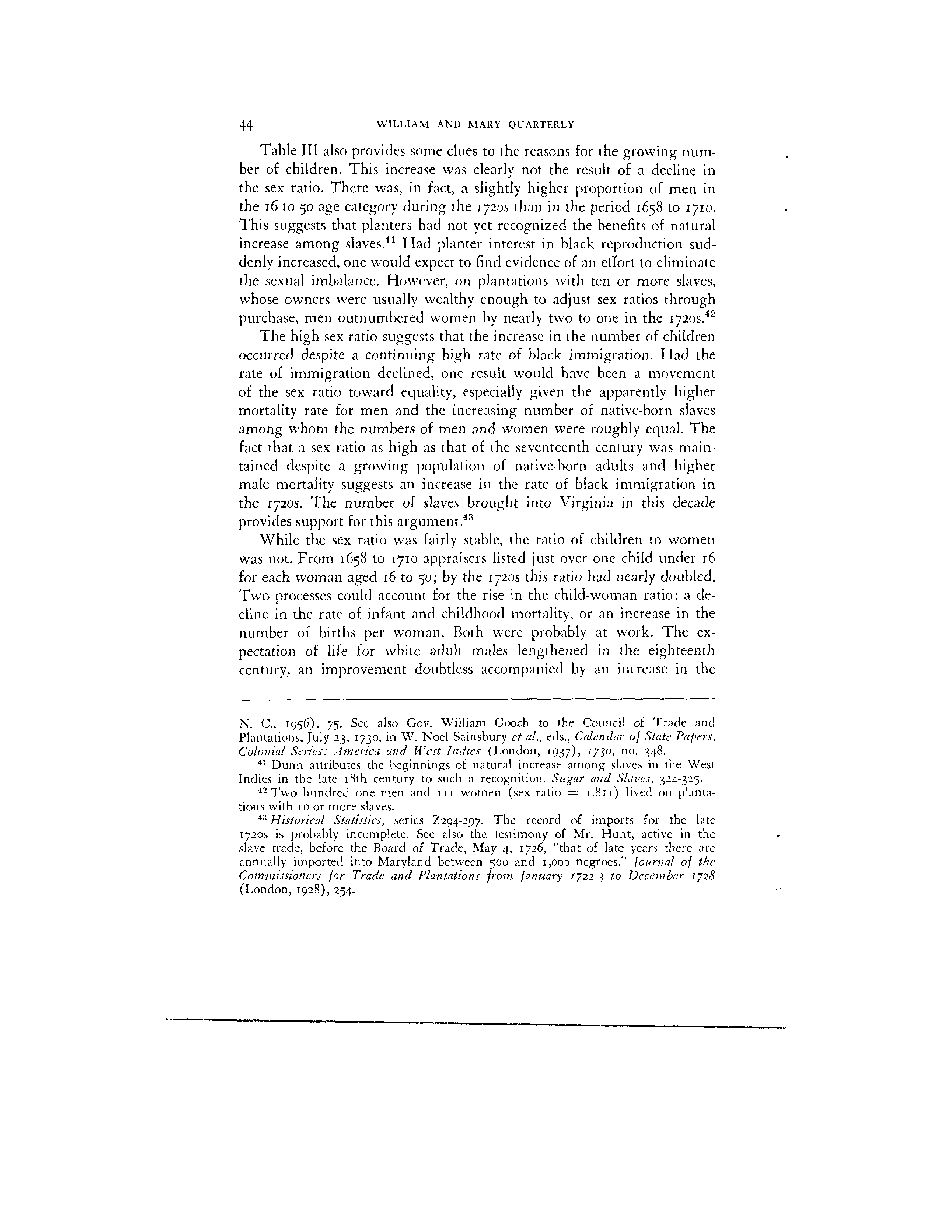|
44 WILLIAM AND MARY QUARTERLY
Table III also provides some clues to the reasons for the growing num-
ber of children. This increase was clearly not the result of a decline in
the sex ratio. There was, in fact, a slightly higher proportion of men in
the 16 to 50 age category during the 17205 than in the period 1658 to 1710.
This suggests that planters had not yet recognized the benefits of natural
increase among slaves.41 Had planter interest in black reproduction sud-
denly increased, one would expect to find evidence of an effort to eliminate
the sexual imbalance. However, on plantations with ten or more slaves,
whose owners were usually wealthy enough to adjust sex ratios through
purchase, men outnumbered women by nearly two to one in the I72os.42
The high sex ratio suggests that the increase in the number of children
occurred despite a continuing high rate of black immigration. Had the
rate of immigration declined, one result would have been a movement
of the sex ratio toward equality, especially given the apparently higher
mortality rate for men and the increasing number of native-born slaves
among whom the numbers of men and women were roughly equal. The
fact that a sex ratio as high as that of the seventeenth century was main-
tained despite a growing population of native-born adults and higher
male mortality suggests an increase in the rate of black immigration in
the 17205. The number of slaves brought into Virginia in this decade
provides support for this argument.43
While the sex ratio was fairly stable, the ratio of children to women
was not. From 1658 to 1710 appraisers listed just over one child under 16
for each woman aged 16 to 50; by the 17205 this ratio had nearly doubled.
Two processes could account for the rise in the child-woman ratio: a de-
cline in the rate of infant and childhood mortality, or an increase in the
number of births per woman. Both were probably at work. The ex-
pectation of life for white adult males lengthened in the eighteenth
century, an improvement doubtless accompanied by an increase in the
N. C, 1956), 75. See also Gov. William Gooch to the Council of Trade and
Plantations, July 23, 1730, in W. Noel Sainsbury et al., eds., Calendar of State Papers,
Colonial Series: America and West Indies (London, 1937), fjy>, no. 348.
41 Dunn attributes the beginnings of natural increase among slaves in the West
Indies in the late i8th century to such a recognition. Sugar and Slaves, 324-325.
42 Two hundred one men and in women (sex ratio = 1.811) lived on planta-
tions with 10 or more slaves.
43 Historical Statistics, series 2294-297. The record of imports for the late
17205 is probably incomplete. See also the testimony of Mr. Hunt, active in the
slave trade, before the Board of Trade, May 4, 1726, "that of late years there are
annually imported into Maryland between 500 and 1,000 negroes." journal of the
Commissioners for Trade and Plantations from January 1722-3 to December 1728
(London, 1928), 254.
�
|

